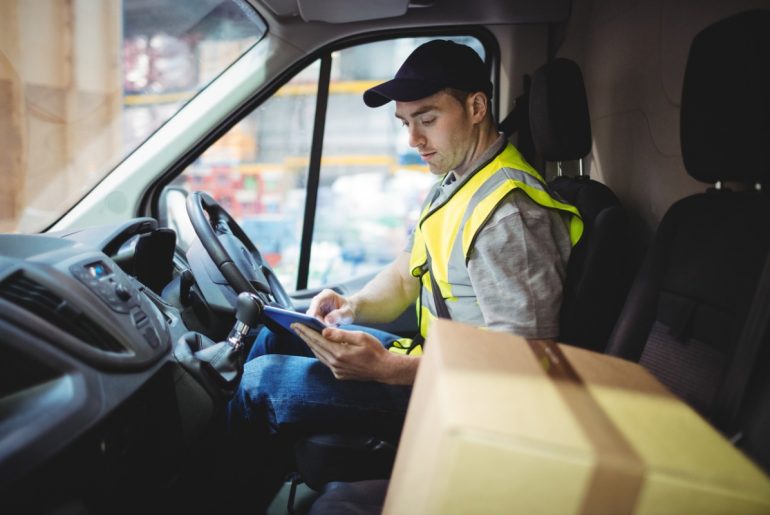As the cannabis industry grows, delivery-only and dispensaries with delivery options have emerged as popular options for consumers purchasing cannabis products in California. However, starting a delivery dispensary in the state can be complex and highly regulated.
From navigating state and local laws to building a solid business plan and finding reliable drivers, there are many factors to consider when starting a cannabis delivery business. This article will provide a comprehensive guide to help aspiring entrepreneurs launch a successful delivery dispensary in California.
Prerequisites for a Delivery Dispensary in California
To learn how to start a weed delivery service in California that adheres to regulations, a business must fulfill several crucial prerequisites and understand the following necessary steps:
- Pay Application Fees
- Obtaining a state and local license
- Obtaining insurance
- Ensuring vehicle compliance
- Incorporating GPS tracking
- Obtaining security
- Keeping thorough records of your business
Pay Application Fees

Part of the application process in California includes the application and licensing fees, which total $12,000, with an application fee of $1,000 required upon submission.
Please pay your application fee and submit your application. Upon completion of your license application, the system will provide instructions on how to pay the fee.
Your application cannot be processed by the DCC until the application fee is paid.
State License
Before starting a cannabis delivery service business, a business must obtain a state license from the Bureau of Cannabis Control (BCC) to operate a cannabis delivery service in California.
Local License
In addition to the state license, the business must obtain a delivery license from the local jurisdiction where they plan to operate. As part of this licensing process, this may include a city or county permit or license.
Insurance

California law requires cannabis delivery businesses to have commercial automobile insurance coverage that meets specific minimum requirements.
The policy must provide coverage for bodily injury and property damage liability, collision, and comprehensive coverage for the delivery vehicle. The minimum coverage limits for bodily injury and property damage liability are $1 million per occurrence and $2 million aggregate.
In addition, the business must also obtain a general liability insurance policy that provides coverage for premises liability, product liability, and other potential risks associated with operating a cannabis or marijuana business. The policy must have a minimum coverage limit of $1 million per occurrence and $2 million aggregate.
Vehicle Compliance

California law requires that all commercial vehicles, including those used for cannabis delivery, meet particular safety and compliance standards. The delivery vehicle must be appropriately registered with the California Department of Motor Vehicles (DMV) and display a valid license plate.
In addition, the vehicle must be equipped with safety equipment such as brakes, lights, and turn signals that meet state and federal standards. The vehicle must also comply with weight and size restrictions and be operated by a valid commercial driver’s license (CDL) driver.
GPS Tracking
California law requires cannabis delivery businesses to install and maintain a GPS tracking device on each delivery vehicle. The tracking device must provide real-time location information and be accessible to the business at all times.
Security

To ensure the safety of the delivery driver and the product being transported, a cannabis delivery business must have adequate security measures in place. This may include:
- A secure storage area for products at the dispensary location
- A secure delivery vehicle with locking doors, an alarm system, and GPS tracking
- A delivery driver with a valid driver’s license, a clean driving record, and thorough training in safety protocols and security measures
- A panic button or other emergency communication system in case of a security breach
- Background checks for all employees, including delivery drivers
Record-Keeping
California’s regulations require cannabis delivery businesses to maintain accurate and detailed records of all transactions. These records must include the following:
- The name, address, and birthdate of the customer who placed the order
- The name and amount of each product delivered
- The date and time of delivery
- The purchase price and any applicable taxes or fees
- The name and license number of the delivery driver who made the delivery
Essential Tips for Maintaining Compliance with California’s Cannabis Regulations
Compliance with California’s cannabis regulations is essential for any delivery dispensary business. Businesses should regularly review and update their standard operating procedures to reflect any changes in regulations and ensure compliance.
It’s also essential to maintain accurate record-keeping and inventory management systems and to regularly train employees on compliance protocols.
In addition, businesses should stay up-to-date on any changes or updates to the state’s cannabis laws and regulations and consult with legal counsel as needed. By prioritizing compliance, businesses can mitigate risks and build a strong reputation within the industry.
Factors to Consider When Determining Your Cannabis Delivery Radius

When starting a cannabis delivery dispensary, it’s essential to define your delivery area and your cannabis delivery radius. Some key factors to consider are the size of your city or county, local regulations, traffic patterns, and competition from other dispensaries.
In addition, you’ll need to consider the population density of your delivery area and the demographics of your target market to ensure that your delivery radius is tailored to the needs and preferences of your customers.
You’ll also need to consider the size and capabilities of your delivery team and the demand for cannabis products in your area. By carefully evaluating these factors, you can develop a delivery radius to efficiently and effectively serve your customers while remaining compliant with California’s cannabis regulations.
Saving Time and Money With Cannabis Delivery Software
One of the most effective ways to streamline and optimize your cannabis delivery operations in California is by utilizing cannabis delivery software like RouteManager. This type of software can help you save time and money by automating and simplifying many aspects of your delivery process.
Benefits of RouteManager
RouteManager offers a wide range of benefits for cannabis delivery businesses looking to streamline and optimize their operations in California. Some key benefits include:
1. Improved Efficiency: RouteManager automates many aspects of the delivery process, such as route planning, dispatching, and tracking. This can help you reduce delivery times, increase the number of deliveries per day, and optimize your delivery routes for maximum efficiency.
2. Cost Savings: By optimizing your delivery routes and reducing delivery times, cannabis delivery software can help you save on fuel costs, labor costs, and vehicle maintenance expenses. This can lead to significant cost savings over time.
3. Enhanced Customer Satisfaction: With real-time tracking and updates on delivery times, this software can help you provide a higher level of customer service and satisfaction. Customers can track their deliveries in real-time, receive accurate delivery estimates, and stay informed throughout the delivery process.
4. Compliance: RouteManager can help you maintain compliance with California’s cannabis regulations by providing accurate tracking and record-keeping of deliveries. This can help you avoid potential fines or penalties for non-compliance.
5. Customization: This cannabis delivery software can be customized to meet the specific needs of your cannabis delivery business, allowing you to tailor the software to your unique delivery radius, inventory management system, and customer preferences.
By utilizing RouteManager cannabis delivery software for your cannabis delivery business in California, you can streamline operations, save time and money, improve efficiency, enhance customer satisfaction, and maintain compliance with state regulations. Investing in quality software can help your delivery dispensary stand out from the competition and succeed in the rapidly growing cannabis market.
FAQs
Can anyone start a cannabis delivery dispensary in California?
No, only individuals or businesses that have obtained the necessary licenses and permits from the state of California can legally operate a cannabis delivery dispensary.
What are the requirements for becoming a delivery driver for a cannabis dispensary?
Delivery drivers must have a valid driver’s license, a clean driving record, and be at least 21 years old. They must also undergo background checks and complete any required training or certifications.
Can cannabis delivery dispensaries operate 24/7 in California?
No, cannabis delivery dispensaries in California are subject to regulations on operating hours. It’s important to check with local authorities for specific restrictions on operating hours in your area.
Do I need a medical card to purchase cannabis or CBD products?
To purchase cannabis or CBD products in California, you do not need a medical card. Both recreational and medical marijuana are legal in the state, so anyone over the age of 21 can purchase cannabis products from a licensed dispensary. However, if you are under 21, you will need a valid medical marijuana recommendation from a physician.
Can a non-storefront retailer sell and deliver cannabis in California?
Yes, under California’s cannabis regulations, non-storefront retailers, also known as delivery-only dispensaries, are allowed to sell and deliver cannabis products to customers. These businesses operate without a physical storefront but instead take orders online or over the phone and deliver them directly to consumers.
Final Thoughts
Starting a delivery dispensary in California can be a lucrative business opportunity, especially with the growing demand for cannabis products in the state. By utilizing RouteManager cannabis delivery software, you can streamline your operations, improve efficiency, and enhance customer satisfaction.
With features like optimized delivery routes, real-time tracking, compliance management, and customization options, RouteManager can help you save time and money while staying compliant with California’s cannabis regulations.
Remember to ensure that you have the necessary licenses and permits to operate a cannabis delivery dispensary in California and that your delivery drivers meet all requirements. Stay informed about local regulations on operating hours, and make sure to provide exceptional customer service to build a loyal customer base.




